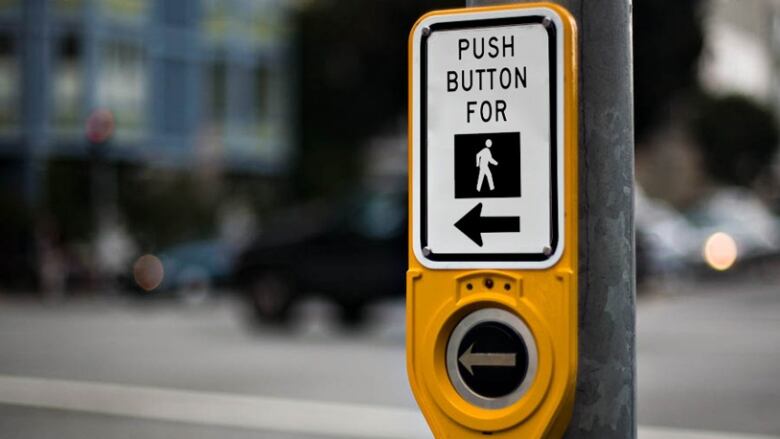Hamilton's Vision Zero plan is a lot of 'fluff,' says road safety advocate
Vision Zero is the idea of eliminating pedestrian and cyclist deaths

The city will spend $1.7 million in red light camera money to try to make the streets safer for pedestrians and cyclists.
Butcriticssay the proposed spending plan on eliminating pedestrian and cyclist deaths, known as Vision Zero, focuses too much on "fluff" like public education, and not enough on changing the roads.
City council's public works committee votedMonday to spend moneyontraffic calming, speed limit reductions, flashing signs, lawn signs,education campaigns and other measures. The spending is part of its Vision Zero plan for 2019 to 2025.
But Graham Larkin, executive director of the Vision Zero campaign, encouraged council not to adopt the plan because it was too lacking in meaningful actions.
"I beg you not to go through with this @CityofHamilton@FredEisenberger," he tweeted.
Larkin says the plan is heavy on flimsy actions, like flashing speed limit signs and driver education. It needs more focus on reducing speed limits to 30km/h and more spending on traffic calming, curb bump-outs and other physical measures that will force people to drive differently.
"They're basically wasting this $1.7 millionin extra money," Larkin told CBC News. "They're not focusing on implementation of actual life-saving measures, as opposed to engagement or education or 'watch your speed' signs."
"Extra Red Light Camera Reserve would pay for an awful lot of fluff (signage, message boards, training, education, public engagement),"Larkintweeted during the meeting. "And there will be yet more data-gathering."
"It should be spending more on speed limits, street design, and advance signals for pedestrians and bicycles."
About 1,700 pedestrians and cyclists were hit by cars in Hamilton from 2013 to 2017, says a city report. That number has stayed fairly even since 2014, when the city adopted a Vision Zerophilosophy.
Vision Zero isa term that describes the goal of eventually having zero road deaths.
Most councillors were pleased with the city's plan Monday.
"Most of this (plan) is true action and real improvements," said Arlene VanderBeek, councillor for Dundas/Flamborough (Ward 13). "They're things you can put your finger on so the community knows we're active moving toward Vision Zero."
Coun. John-Paul Danko (Ward 8, central Mountain) echoed Larkin's take though. Segregated bike lanes, knock-down sticks and other physical changes are what change driver behaviour, he said.
"I'm not sure it's the city's job to teach people how to drive or how to walk," he said. "In my opinion, it's the city's job to provide an environment that is safe for road users."
The city's plan includes spending $400,000 in education this year.
It even includes investing money in highways with no pedestrians or cyclists at all. The $650,000 designed for"engineering priorities" includes variable message boards and a queue warning system on the Red Hill and Lincoln Alexander parkways.
The red light camera reserve has $6.3 million, and is money the city has collected from ticketing drivers photographed and fined via the city's red light cameras.












_(720p).jpg)


 OFFICIAL HD MUSIC VIDEO.jpg)
.jpg)



























































































